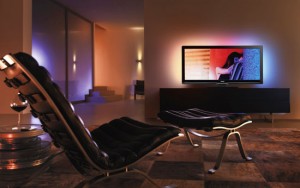LED backlight market is expected to stage a comeback. With the resolution improvement of action device panels, and meanwhile active-matrix AMOLED limitation due to technical characteristics (it is unable for resolution improved in the short term), the market value of LED backlight components would continue to rise next year.
Experts indicated that, due to the self-luminescence characteristics of AMOLED, light sources are no longer needed. Thus AMOLED is treated as the biggest threat to the LED backlight market. However, with the rapid development of LED backlighting technology, many LED-backlight-related industries, including smart-phone, tablet devices and other consumer electronics, caused the popular tide of high-resolution. AMOLED encountered bottlenecks in this area together with its expensive production costs will slow down the growing trend of AMOLED products. On the other hand, the liquid crystal display (TFT LCD) will feel no constraints, making LED backlight market continue to light.
Experts further pointed out that, although AMOLED has multiple advantages: super-thin and high color-saturation, the over-low resolution is still the fatal Achilles Heel for it. Take Samsung high-end smart-phone Galaxy S3 for example, its resolution is only 306ppi, while the resolution of Apple iPhone5 is 326ppi. It is estimated that with the further improvement of TFT LED display technology will increase the resolution, from 326ppi to 441ppi. Now the gap between these two smart devices is obvious.
In addition to the resolution obstacle, the expensive selling price is the main reason that hindered the fast rising of AMOLED applications. According to professional analysis, nearly 90% AMOLED panels is monopolized by Samsung, leading to the constant high price. In order to reduce production costs and meanwhile meet the high-quality requirements of users, other mobile manufacturers adopted LCD IPS panels with full high-definition (Full HD) and energy-saving led tunnel light backlighting elements.
In addition, AMOLED panels can be hardly adopted by TV sets, which is another major reason for its low production rate. In spite that both Samsung and LG have announced the successful development of 50 inch+ AMOLED panels, the implement of quantity production has been repeatedly delayed. The estimated selling price is also breathtaking. For many families, buying general LCD TV sets will be more practical than purchasing AMOLED display products.










